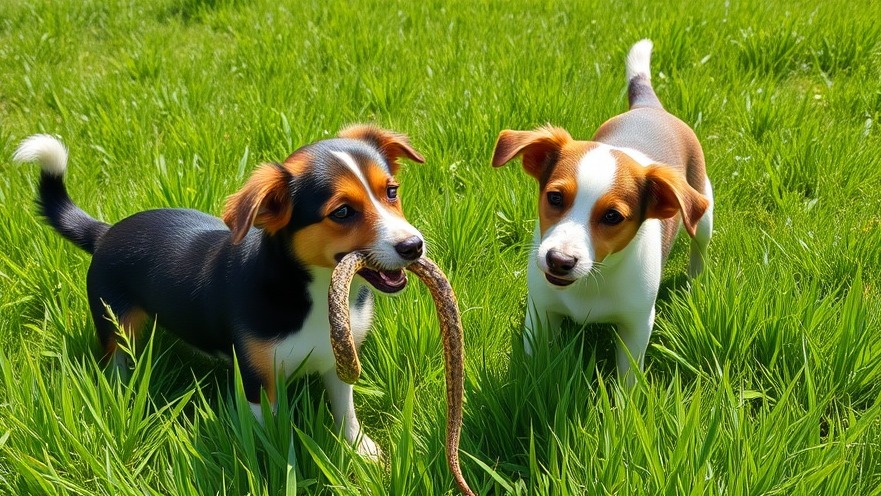
The Unfortunate Truth: Snake Bites and Our Beloved Dogs
Many dog owners encounter the frightening possibility of a snake bite, especially if their furry friends enjoy outdoor adventures. Picture this: you’re walking along a sunny trail, and your dog enthusiastically explores the nearby brush. Suddenly, you hear a yelp, and all attention turns to the potential threat slithering away. In North America, venomous snakes are a reality, and the idea of a snake bite can provoke immediate concern.
Understanding the Signs: How to Identify a Snake Bite
Recognizing the signs of a snake bite is essential for timely intervention. Above all, don’t panic. According to veterinarians, your reaction may affect your dog's stress levels, potentially exacerbating the situation. The fang marks from venomous snakes typically appear as puncture holes, while nonvenomous snakes leave more of a horseshoe-shaped impression. Like a puzzle, every detail holds a clue.
Immediate Actions to Take Following a Suspicion of a Snake Bite
If you suspect your dog has been bitten, the priority is to get to veterinary help promptly, but remember to remain calm. This calm can help stabilize your dog’s condition. As you walk, avoid looking for the snake; the key is to focus on your dog’s care. It’s helpful to be familiar with the types of snakes in your area, identifying the ones that pose a risk to your pets.
Symptoms That Are Red Flags: Which Signs to Watch For?
Awareness of the symptoms following a snake bite can make all the difference in your dog’s health. Nonvenomous bites often exhibit minimal swelling and pain, whereas venomous bites may lead to severe symptoms, including:
Restlessness
Excessive drooling
Vomiting or diarrhea
Rapid swelling around the bite site
Shallow breathing or shock
Being attuned to your dog’s typical behavior can help you quickly identify any changes that may suggest distress.
What Happens After a Snake Bite: Veterinary Treatment Explained
It's important to understand the treatment options available for your pet. If your dog exhibits any severe symptoms or is suspected to have had a venomous encounter, seek immediate veterinary care. Vets can administer antivenom, particularly for bites from the “big three” venomous snakes: rattlesnakes, copperheads, and water moccasins. The treatment process can greatly influence recovery chances, leading to promising outcomes.
Prevention is Key: How to Protect Your Dog From Snake Encounters
While it’s not entirely possible to shield your dog from all biting hazards, there are proactive steps you can take. Training your dog to respond to commands like “leave it” can detract them from potentially dangerous encounters. Additionally, keeping your dog on a leash in areas known for snake activity can provide an extra layer of security.
Stay Informed: Community Resources and Local Snake Safety
Knowledge is power when it comes to protecting your dog's wellbeing. Join local community groups focused on pet safety, or familiarize yourself with guidelines from wildlife organizations about snakes in your region. They often share crucial information on snake prevention and what to do if you encounter one while out walking.
A Heartwarming Final Thought: The Bond We Share
Through all the excitement of outdoor exploration, it’s essential to remember the bond you share with your dog. Each day spent together enriches your lives, and knowing how to keep them safe allows that connection to flourish. It reconfirms the care and love pet owners pour into their relationships with their dogs, making them vital family members.
So, whether you find yourselves on a trail or exploring your backyard, keep these insights in mind. They could very well save your beloved furry friend. Share your dog's adventure stories, and connect with fellow dog lovers in your community. Together, we can cultivate a network of care and understanding!
 Add Row
Add Row  Add
Add 




Write A Comment